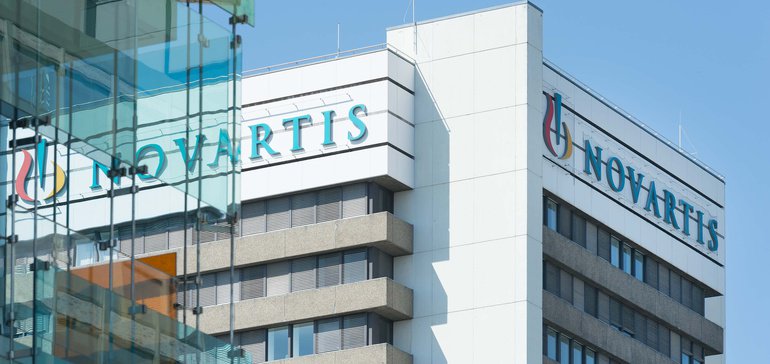Zolgensma (onasemnogene abeparvovec) wasn’t the first gene therapy approved in the U.S. That milestone belongs to Spark Therapeutics’ Luxturna (voretigene neparvovec), a treatment for a rare type of inherited blindness.
Yet, given the severity of spinal muscular atrophy and the life-saving efficacy shown for Zolgensma in clinical testing, Novartis’ drug is viewed as an early test case for the curative promise held out by gene therapy.
Roughly 450 to 500 people are born with SMA each year in the U.S. For infants affected with SMA, a gene called survival motor neuron 1 is defective or missing, disrupting production of a protein that’s vitally important for motor development.
Zolgensma fixes that, delivering a functional copy of the needed gene to halt disease progression.
But at more than $2 million per patient, Zolgensma also represents a substantial challenge to current systems for covering and reimbursing treatment by publication.
So far, according to analysts at Bernstein, insurers appear to be taking a more cautious approach than the Food and Drug Administration, which approved Zolgensma for infants less than 2 years of age with SMA confirmed by mutations in the gene made defective by the condition.
That’s broader than the main study that Novartis used to support its application for Zolgensma’s approval. Called START, that trial enrolled babies with disease onset before 6 months and who had the most severe form of SMA, called Type 1.
In initial coverage policies, several insurers stuck closer to that clinical study population than to the FDA label.
One of the nation’s biggest private insurers, Anthem, sets out six months as the maximum age at treatment and stipulates covered infants must either show symptoms before then or have at most two copies of a related gene called SMN2, which produces a less effective, “back-up” form of SMN protein.
Neither criteria are included in the FDA’s label.
“Anthem criteria are aligned with clinical characteristics and treatment conditions of infants evaluated in clinical trials for whom we have evidence to assess safety and efficacy,” wrote a spokesperson for the insurer in an emailed response to BioPharma Dive.
Two other insurers, Horizon Blue Cross Blue Shield of New Jersey and Blue Cross Blue Shield Nebraska, also require infants be younger than the two year mark described in the FDA-approved labeling.
Contacted by BioPharma Dive, Horizon Blue declined to comment beyond its medical policy, which was issued June 25. The Nebraska plan did not provide a comment by publication.
“By making coverage choices that may be legally defensible but deny Zolgensma to patients who could clearly benefit, the payers are sending a clear signal that they are very unhappy with the price of Zolgensma,” wrote analysts at Bernstein in a note to clients.
Other payers only allow for coverage when patients are symptomatic, a criteria that raises questions when SMA is diagnosed via genetic mutations.
“It’s very hard to find the argument from a scientific perspective that you need to wait for symptoms to approve the treatment,” said Ronny Gal, an analyst at Bernstein, in an interview with BioPharma Dive. “The symptoms appear when neurons die. The biological damage has already taken place.”
Treating SMA patients early is a priority for Novartis, which is working to expand newborn screening for the condition.
Still, in the insurers’ defense, the Novartis study of Zolgensma in presymptomatic patients is ongoing and the Institute for Clinical and Economic Review, a looked-to cost watchdog, has held off on rating Zolgensma’s clinical benefit in that population.
SMA patients could also still receive treatment via exceptions and “many may well receive it,” acknowledged Bernstein.
Novartis invested heavily in Zolgensma, buying its original developer AveXis for $8.7 billion, and has tied the therapy to a broader push into complex, cutting-edge science. Zolgensma’s success is critical to assure investors that Novartis’ bet will pay off.
A spokesperson noted that Novartis is “pleased with the way payers are writing and implementing policies,” saying the company will give more updates on its upcoming second quarter earnings call.
“Multiple patients across different SMA types, weights and ages (up to 2 years old), including those switching from nusinersen, have been treated now across a number of hospitals and payer types,” the spokesperson said, referring to the nonproprietary name for Biogen’s competing therapy Spinraza.
Several insurers reviewed by Bernstein did not allow prior treatment with Sprinaza, and most didn’t permit concurrent treatment with the drug, which costs $750,000 in the first year of treatment and $375,000 thereafter.
Zolgensma is one of the first in an emerging field full of unanswered questions, which could argue for a slower approach. Still, early pushback to Zolgensma could signal some reticence from insurers to jump wholesale to covering gene therapies broadly.








